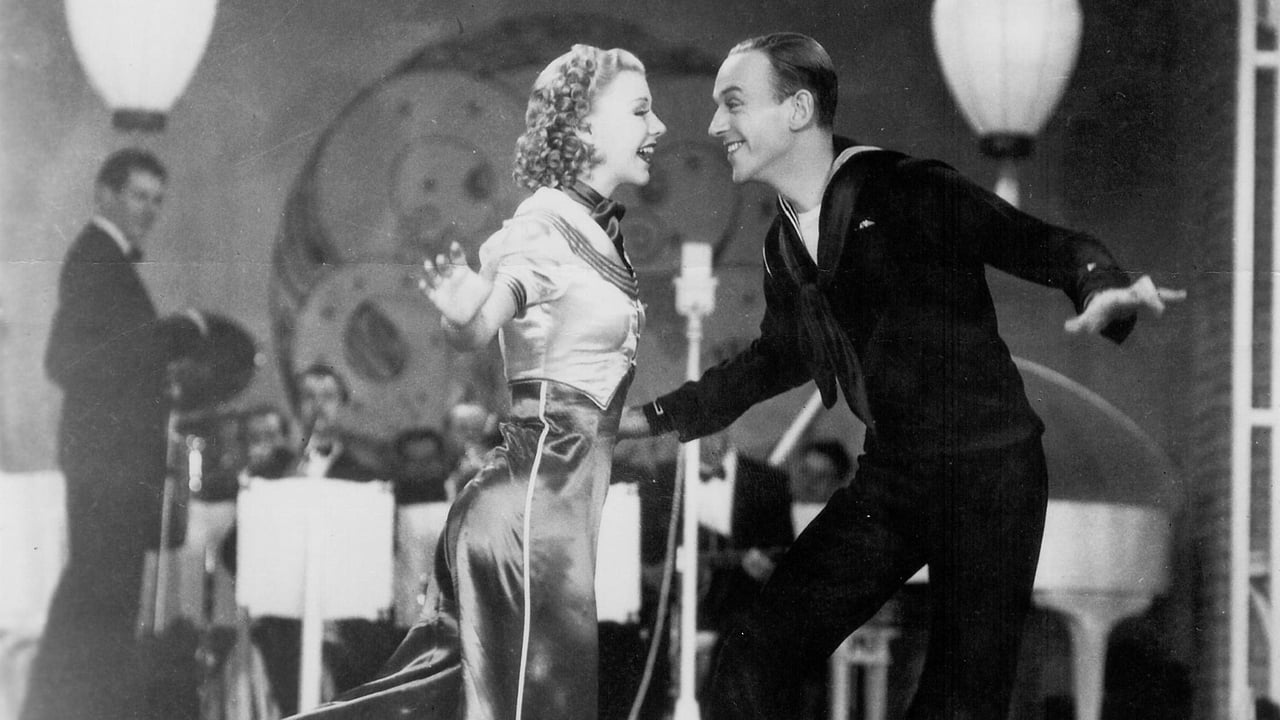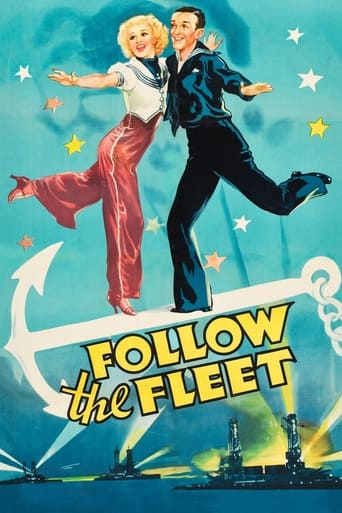



Who payed the critics
The Worst Film Ever
The performances transcend the film's tropes, grounding it in characters that feel more complete than this subgenre often produces.
View MoreThe movie is wonderful and true, an act of love in all its contradictions and complexity
View MoreOne of the best Astaire-Rogers film is this 1936 gem of a flick.With the constant theme of Let Yourself Go in the background, Astaire and Rogers dance up their usual storm and by film's ending- Let's Face the Music and Dance is so appropriately for how the story has turned.Astaire meets up with Rogers, his ex-girlfriend, while he is on liberty from the navy.Harriet Hilliard steals the show, particularly at the beginning, as the sister of Rogers. A spinster schoolteacher, she almost looked like Bette Davis in beginning scenes of 1942's "Now, Voyager."Randolph Scott co-stars as Astaire's mate, who falls for Hilliard after she dolls herself up.The plot may be corny, but the dance routines sparkle and there is a story after all.
View MoreContinuing my affair with the delightful Ginger Rogers, I can't go for long without her. This is great stuff, up there with Top Hat and Shall We Dance - the three best Fred 'n' Ginge films - all directed by Sandrich in the mid 30s. Irving Berlin's tunes are all pedigree again here, including 'Let's Face the Music and Dance', the scene paid tribute in Fellini's Ginger and Fred. The dancing is lively and inventive, and it's good value at 110 minutes.To draw the story out, the subplot follows another couple, Randolph Scott and Harriet Hilliard - the latter even gets a couple of songs. The contrast between Hilliard and Rogers (who play sisters) is fascinating. Rogers' face somehow sparkles and you know she's witty, humane and is high on emotional intelligence by her mannerisms and the way she uses her voice with that cute Southern edge. Hilliard is good but doesn't have that something which is evidently star quality. We don't have to worry about Fred, he is so good at what he does it all looks like a holiday for him - he lets himself go and enjoys it, and the others follow his lead. Sandrich clearly had the knack of getting everyone in the right frame of mind.I'll no doubt be dipping into this regularly, as I do with the other Fred & Ginger films, particularly on those nights when you can't sleep and you want a reason for not hating the world.
View MoreFollow the Fleet is a lot of fun and very charming. It isn't quite as good as Top Hat and Swing Time, but fans of Fred and Ginger won't be disappointed and will be enthralled instead. Like with almost all of their outings the story is somewhat silly and plays second fiddle to everything else and Harriet Hilliard, apart from her two wonderfully done solos(especially But Where are You?), is a little dull. However, while perhaps not as audacious or sophisticated as Swing Time, it is beautiful to look at with the photography particularly pleasing, the standout being Let's Face the Music and Dance. Irving Berlin's score and songs are not quite as consistent as his ones for Top Hat but are still wholly memorable and put a smile on your smile. Let's Face the Music and Dance is the jewel of the crown, helped also by Fred and Ginger's best ever dance routines, but Let Yourself Go and I'd Rather Lead a Band also stand out among the songs. The choreography is energetic and poised, Let's Face the Music and Dance once again comes to mind but Let Yourself Go positively makes you want to tap your toes. The dialogue is smart, funny and sweet, while charmingly swaggering Fred Astaire and sassy Ginger Rogers, in their graceful and full-of-personality dancing and in their performances, are entirely captivating. Randolph Scott is appropriately virile and doesn't look too out of his depth(considering that he's better known for his westerns), one wishes though that he had a stronger partner in Hilliard, who comes to life in her musical numbers but is lacking elsewhere. In conclusion, great fun and easy to like. 9/10 Bethany Cox
View MoreSince 1935's "Top Hat" is, quite simply, one of the finest musicals ever made, it was perhaps inevitable that Fred Astaire and Ginger Rogers' follow-up picture, as a team, should fall somewhat short of that miraculously high mark. Still, that next film, the 5th for the team, 1936's "Follow the Fleet," does have an incredible lot to offer. In this one, Fred doesn't play his typical debonair sophisticate, but rather a gum-chewing Navy gob named Bake Baker, who, back in San Francisco on leave, with his shipmate Bilge Smith (played by Randolph Scott, who had costarred in F&G's 3rd outing, "Roberta"), sets out to romance sisters Sherry (our Ginger) and Connie Martin (Harriet Hilliard, who many baby boomers will recall from the old "Ozzie & Harriet" TV show). Making small appearances in "Follow the Fleet" are Betty Grable (who had performed "Let's K-nock K-nees" with Edward Everett Horton in F&G's 2nd film, "The Gay Divorcée") and Lucille Ball (who had also appeared briefly in "Top Hat" as well as "Roberta"; her role is a bit more sizable here). Director Mark Sandrich, who had also brought in "The Gay Divorcée" and "Top Hat," and would later helm the team's 7th and 8th films, "Shall We Dance" and "Carefree," does his usual professional work here. Still, with all these elements in place, the picture has its problems, perhaps the biggest one being a story line that drags in parts (ironic, perhaps, given the word "fleet" in the film's title!). The picture is not nearly as funny as some of the others in the 10-film series (especially the hilarious "Gay Divorcée" and "Carefree"), and there is no single, standout, epic dance number to speak of (such as The Carioca in F&G's initial outing, "Flying Down to Rio," The Continental in "The Gay Divorcée," The Picolino in "Top Hat" or The Yam in "Carefree"). Van Nest Polglase's sets are not nearly as spectacular here as usual, and there are no wonderful supporting performances from the likes of character actors E.E. Horton, Erik Rhodes or Eric Blore. Still, there ARE the musical/dance numbers, set to seven Irving Berlin songs, and they are, for the most part, wonderful. Highlights of the film are Fred belting out "We Saw the Sea" (with its memorable rhyme of "taxi" and "Black Sea"), Ginger singing "Let Yourself Go," Harriet warbling "Get Thee Behind Me, Satan," F&G kicking tuchus in a dance (no) contest, Fred and some fellow gobs tapping up a storm to "I'd Rather Lead a Band," Ginger's solo tap dance audition, Harriet crooning "But Where Are You," Fred tickling the ivories (!) most impressively, F&G's out-of-sync, pratfall-laden dance routine to "I'm Putting All My Eggs In One Basket," and, finally, F&G's superelegant turn to "Let's Face the Music and Dance." Ultimately, "Follow the Fleet" reveals itself to be a middling F&G film...meaning that it is still a superior musical and lovely, magical entertainment. Later in 1936, by the way, the pair would zoom back up to the heights again, in "Swing Time"....
View More